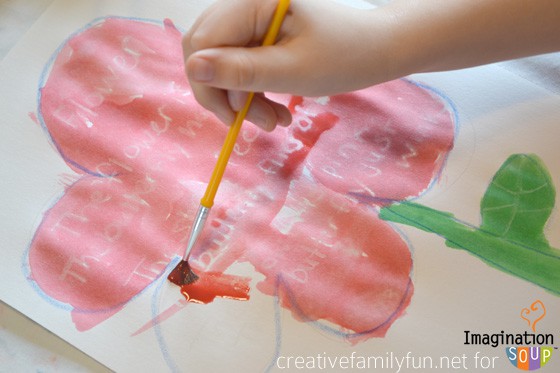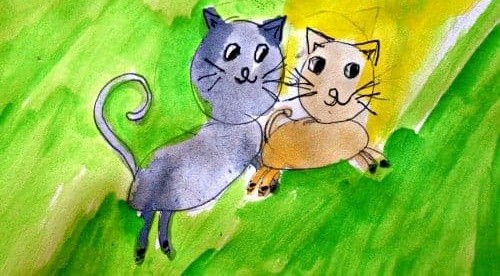Poetry Month: Best Resources for Reading & Writing Poetry with Kids
This post may contain affiliate links.
Poetry month is often the time we remember to teach and read poems with kids and help our children write poetry. But you can read and write poetry with kids all year long–not just during poetry month!
Elementary teachers love teaching children to write poetry because it’s so accessible — poems are short! The payoff is more immediate than with longer narrative or expository writing. Plus, poetry lends itself to teaching kids about figurative language, voice, sensory images, showing, not telling, and more.
When is poetry month?
National Poetry Month is in April!
Founded in 1934, the Academy of American Poets was organized to support American poets and foster appreciation of contemporary poetry. In 1996, they inaugurated National Poetry Month.
Poetry Month Resources
Celebrate poets and poetry during poetry month or any month by reading and writing poetry. See how these poetry teaching resources, plus lesson plans for elementary teachers and homeschoolers, can help you focus on poetry!
“Conditions for real writing:
1) Personal (choice)
2) Interpersonal (social)
3) Time/space to do quality work
4) Pay-off (purpose/feedback)“ – Ralph Fletcher
Favorite Poetry Books for Teachers
Awakening the Heart: Exploring Poetry in Elementary and Middle School For the Good of the Earth and Sun: Teaching Poetry (Heinemann/Cassell Language & Literacy S)
For the Good of the Earth and Sun: Teaching Poetry (Heinemann/Cassell Language & Literacy S) Kids’ Poems (Grades K)
Kids’ Poems (Grades K) Kids’ Poems (Grades 1)
Kids’ Poems (Grades 1) Kids’ Poems (Grades 2)
Kids’ Poems (Grades 2) Kids’ Poems (Grades 3-4)
Kids’ Poems (Grades 3-4) Poetry Matters: Writing a Poem from the Inside Out
Poetry Matters: Writing a Poem from the Inside Out Wishes, Lies, and Dreams: Teaching Children to Write Poetry
Wishes, Lies, and Dreams: Teaching Children to Write Poetry
Awakening the Heart & For the Good of the Earth and Sun by Georgia Heard
These two poetry teaching books are essential to any elementary teacher’s library. Heard, a poet herself, skillfully guides teachers on how to teach poetry, from heart mapping to getting ideas, to conferring to grow writers.
Kid Poems (Kindergarten), Kids’ Poems (Grade 1), Kid Poems (Grade 2) by Regie Routman
You will LOVE these writing poetry books — they are easy to follow and give excellent lesson plans and activities that are appropriate for each grade level.
Poetry Matters: Writing a Poem from the Inside Out by Ralph Fletcher
Fletcher is one of my favorite authors for teaching writing. This book on teaching poetry helps teachers understand and embrace poetry. A perfect poetry month resource!
Wishes, Lies, and Dreams: Teaching Children to Write Poetry by Kenneth Koch and Ron Padgett
This book describes Koch’s classroom experience teaching poetry. It’s filled with fewer how-to lessons but is inspiring and helpful nonetheless.
Poetry Month Fiction Books

Kiyoshi’s Walk by Mark Karlins, illustrated by Nicole Wong
(ages 4 – 8)
In this narrative picture book, we walk the town with Kiyoshi and his poet grandfather Eto. His grandfather shows Kiyoshi where poems come from. When Eto stops to write a poem, Kiyoshi realizes that poems come from what you see, what you hear, what you imagine, and what you feel. Kiyoshi writes a poem, too. Then they walk home, seeing that there is a poem in everything. I LOVE this book so much and highly recommend it as the perfect read aloud to introduce a poetry unit.

Poetree by Shauna LaVoy Reynolds, illustrated by Shahrzad Maydani
(ages 4 – 8)
This is a gentle picture book story celebrating poetry, nature, and friendship with soft, muted illustrations. When Sylvia ties her newly written spring poem onto a birch tree at the park, she finds a new poem left for her the next day. Excited, she writes spontaneous poems and dreams in rhymes, all the while trading poems back and forth with a mysterious poet. Soon, she’ll learn that she has a new friend, a poet just like her.

Otto the Owl Who Loved Poetry by Vern Kousky
(ages 4 – 8)
You’ll fall in love with Otto, a book-loving owl who teaches his owl and mice friends the beauty of sharing poetry. Beautiful!

Love that Dog by Sharon Creech
(ages 8 – 12)
This is my favorite novel in verse about poetry! Love That Dog by Sharon Creech is written from the perspective of a boy who is NOT enthusiastic about his teacher’s poetry unit. He hates it. But that eventually changes… I can’t say enough about the incredible character arc and how Creech exquisitely crafts a book that captures the importance of self-expression through poetry.
Poetry Month Resources
Preschool
Why I Read Poetry to My Toddler by Robin Merrill
Early Elementary Lesson Plans

Hidden Message Poems
To encourage a reluctant writer, we turned our poetry into artwork. We made it even more special by hiding our poetry inside the picture using a fun technique, watercolor resist.
Illustrate a Poem
Introducing poetry to my kids didn’t go exactly as I planned. My kids weren’t loving the poems or even understanding what they were reading. So I needed a way to unlock poetry for my kids — and we found that illustrating a poem helps discover the meaning.

Onomatopoeia Poems
Get your kids jazzed about writing poetry and reading poetry during Poetry Month. One good way is to write about something edible — like popcorn – and work on one or more poetic elements with the five senses. I like to teach repetition, onomatopoeia, and the use of white space with popcorn poetry.

Found Poems
Reuse your old magazines and create found poetry from the words you find on the pages. Found poetry means you’re first going on a treasure hunt for wonderful words and phrases. Then, you can use those words and phrases to write a poem. In this case, it’s collaging together the words you’ve discovered to make a poem.

Haiku Poetry Books
As a parent and former teacher, I’ve read hundreds of poetry collections and found the best haiku poetry books to share with you for the children in your life. Are you ready to dive in to everything haiku?
How to Write a Haiku Poem
Haiku poems are short. They are also fun to write. But writing a good haiku is not as easy as it looks. It takes practice. Poet, Bob Raczka, shares step-by-step directions for writing a haiku.

List Poems
Kids can easily write a list poem using their powers of observation. First, have them look around and write a list of words down the side of their paper. Read more about this form of poetry here.

Poetry Books for Children
Read the best poetry books with children to introduce them to good poems and encourage a love of language, wordplay, sensory images, and rhyme. Moreover, exposing children to poems helps them grow to love poetry –which can become a lifelong interest.
Riddle Poems / Five Senses Poetry
Kids love reading and writing riddles. Riddles often give wonderful sensory details and describe something a child knows about. Plus, they encourage critical thinking and engagement in poetry.

Wordless Picture Book Poems
Use a wordless picture book (big list of wordless picture books here) to inspire a poem!
Nature Poems
Take paper and pencils on a nature walk. Put on your imaginary “Poet Glasses.” Look for the poems in the grass, in the bark of trees, in the smallest petal of a flower. Writing a poem while walking around the world is a wonderful way to celebrate National Poetry Month.
Upper Elementary Lesson Plans
Blackout Poetry
Take previously published text and blackout words and phrases to create a new poem.
Daily Poems (+ A Poem In Your Pocket Day)
For National Poetry Month or any time of the year, read poems daily to your kids. It doesn’t have to be poetry specifically written for kids either.

How to Find a Poem (Idea)
Kenn Nesbitt, poet and founder of Poetry for Kids, shares where kids can find ideas for what to write about.

Illustrate a Poem
Often illustrating a poem helps discover the meaning beneath the words.
Memorize a Poem for National Poetry Month
Since it’s National Poetry Month, memorize a poem — and have our kids memorize one, too. It’s so rich to have those words hanging around our brains.

Read Books in Verse
Books written in poetic verse are enticing to middle grade readers with emotional resonance and poetic form. Plus, they’re shorter to read with more white space. Why not give a novel in verse a try!?
Riddle Poems / Five Senses Poetry
Kids love reading and writing riddle poems. Riddles often give wonderful sensory details and describe something a child knows about. Plus, they encourage critical thinking and engagement in poetry.
Middle School and High School Resources
Blackout Poetry
Take previously published text and blackout words and phrases to create a new poem.
Get Lit Spoken Word Poetry for Teens
Get Lit is a LA.-based initiative created by Diane Luby Lane that uses poetry, reading, writing, and spoken word, to inspire teens to reengage with their lives and education. The Get Lit Rising book is profound, sharing the stories of 19 individual teen poets, the classic poem that inspired them, and their response poems.
Read Books in Verse
Books written in poetic verse are enticing to middle grade readers with emotional resonance and poetic form. Plus, they’re shorter to read with more white space. Why not give a novel in verse a try!?

You Might Also Like
Picture Books That Celebrate Words














